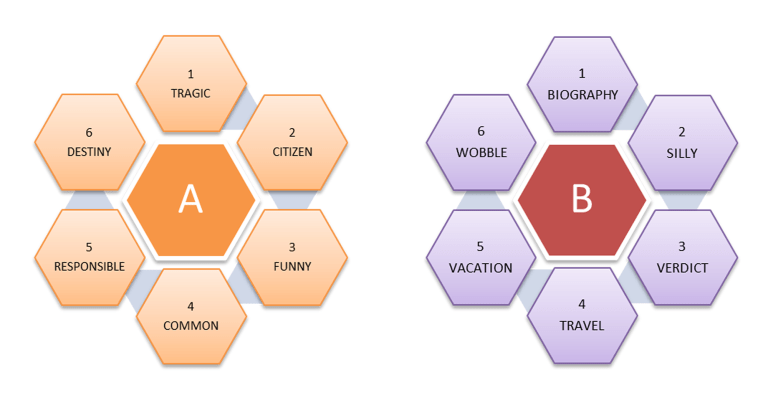This fact used to really trouble me, because on one hand I wanted to be fair to those who showed up on time and were ready to study, and on the other, I really did not want those being late to miss important parts of the lesson. I decided to focus on facilitation activities, sometimes known as ice breakers or warm-up exercises.
“Ice Breaker” vs. “Initial Activity”
An ice breaker is “a game or activity that is used to introduce people to each other so that they feel more relaxed together” (Cambridge Dictionary). However, the activities I plan and use are not just random warm-up games, but rather an integral part of my curriculum and course design aligned with my lesson’s goals and objectives. For this reason, I call them “initial activities.”
Initial activities are usually very informal with the main objective being fun and learning through activities. The activities are done in small groups, so even hesitant students participate.
Benefits of Initial Activities
There are many benefits of initial activities, but here are some of the most important:
They permit classes to start on time and allow the students who came as scheduled to be engaged, get to know other students, and practice English in an informal and nonthreatening environment.
They allow you to observe the students and take notes as part of an informal assessment.
Students gain more confidence and build up their language skills.
They allow you to
review previous material in a fun, gamified form;
introduce new material, and
customize the material to specific student groups.
Preparing Your Initial Activity Toolbox
At first, you will need to do some research and see what types of activities your students do and don’t like, which may require some trial and error to observe what has traction. After a while, once you amass a solid collection of initial activities, you will be able to use and reuse certain formats for different content and units.
Initial activities work best when they are flexibly formatted, or customizable. Customizing your activities takes extra planning time, because you have to come up with several activities as opposed to just one, but the benefits outweigh the time and energy. For example, if you have a group of students struggling with a specific set of vocabulary words, you can use an activity that requires word practice and for which you can swap out word lists while retaining one activity format.
Four Initial Activities
All of the following activities can be used in an online remote learning environment.
1. Puzzlemaker
Almost all of my students love crossword puzzles and word searches, and these can be made with target words either from the previous lesson or a new one. There are many puzzle creators online; I prefer to use the Puzzlemaker from Discoveryeducation.com.
In Class: Students are put in small groups and work on finding target words in the word search activity. The first group to complete the task wins. The winning group writes all the words on the board.
Online: You can assign numbers to the columns of your puzzle to make it easier for the whole class play together (e.g., “Student” is 4 across and 3 down), or you can email the puzzle to your students and have each student print and complete by themselves. When students are done, you share the solved puzzle.
Example Puzzle

BIOGRAPHY DIFFICULT FUNNY
GLOBAL METHOD RESPONSIBILITY
STUDENT TRAVEL VOCABULARY
WORLD
2. Roll the Dice Vocabulary Game
Group students into teams of three to four and each group get a turn rolling a die. The die is rolled twice; the first number represents a word from Figure A and the second number a word from Figure B. Groups have to use the two selected words in a sentence. For example, if the die shows numbers 1 and 4, the group will have to come up with a sentence using tragic and travel.
You are the juror and decide if the sentence is acceptable. The winning team is the one with the most sentences using their two selected words.
In Class: Each student rolls their own die.
Online: The teacher rolls the die for each student. Students in each group take turns.

3. Superstitions
This activity is for intermediate to advanced students. Students get a chance to practice “if” clauses and learn some cultural aspects of English. In a multicultural class setting, students can exchange their national customs/traditions.
Write on the board (or on a slide) some common superstitions and explain them to students. For example:
If you walk under an open ladder, you will have bad luck.
If you break a mirror, you will have bad luck for 7 years.
Next, distribute index cards of the “if” clause part of the superstition and ask students to write their own independent clause to create a conditional. When everyone is done, students share their work. Let students know they can have fun with the clause, which may result in some impossible or silly conditionals. (E.g., “If a black cat crosses your path, you will sneeze for ten days.”)
Online: Read the first part of the clause and ask students to finish it up. Students take turns to make sure all participate.
Optional Activity: Ask students to write their own superstitions, either the ones they know from their country or fabricated. (E.g., “If you see a chimney-sweeper, you need to grasp one of your buttons for good luck”; this example is based on an old European superstition.)
Modification: For more practice, the activity can be repeated with the use of proverbs or quotes rather than superstitions.
4. Red and Green Cards
Each student has a set of red and green cards. You can use this activity to practice pronunciation or reinforce a grammatical rule: Read a sentence or word out loud; students are listening for a specific pronunciation or grammar point and respond with the correct card color. For example, if teaching aspiration in the initial /p/, /t/, or /k/, students raise the green card if they hear it, or the red card if not. You are able to see immediately who is hearing it correctly. You decide whether to assign points and turn this activity into a competition.
In Class: Pass out a set of cards.
Online: Students make their own card sets, or use other red and green items.
5. Funky Numbers
This initial activity is for practising pronunciation with minimal pairs. Begin by assigning a word to each number from 0 to 9.
Have students take turns and say their phone number, date of birth, postal code or some other well-known number combination using the assigned words instead of the actual number. (Alternatively, if privacy is a concern, you can assign a sequence of random numbers to each student using, e.g., a random number generator.) In class, have one student speak their number using words, while the next student writes the words on the board. The first student checks to see if the number was written correctly. Students take turns. The one who writes the fastest wins.
Example

In Class: Use the board to show the numbers and assigned words.
Online: Show students a slide with the numbers and assigned words. When checking for accuracy, students can write down the numbers on paper and then read them aloud to see if they were correct.







